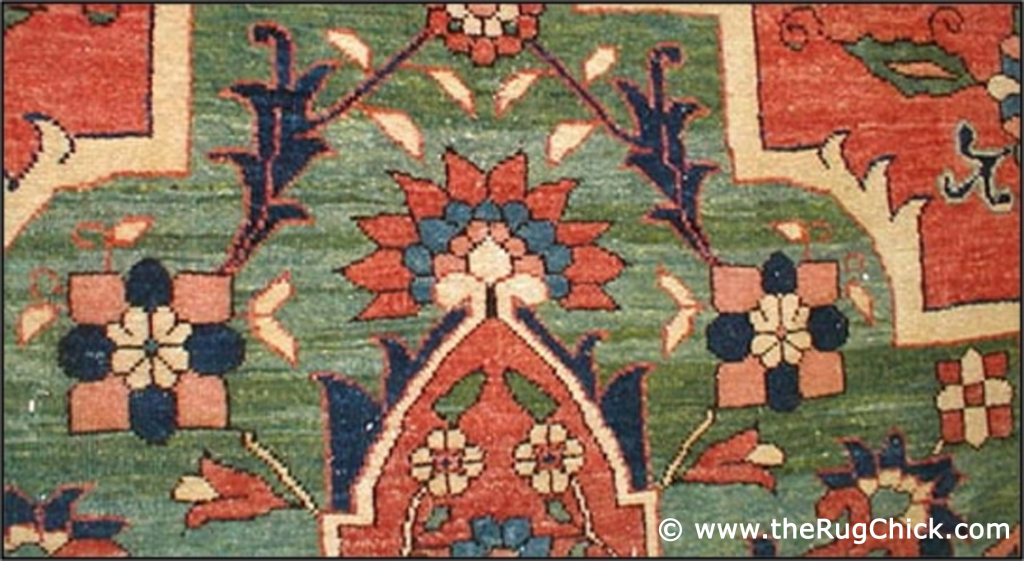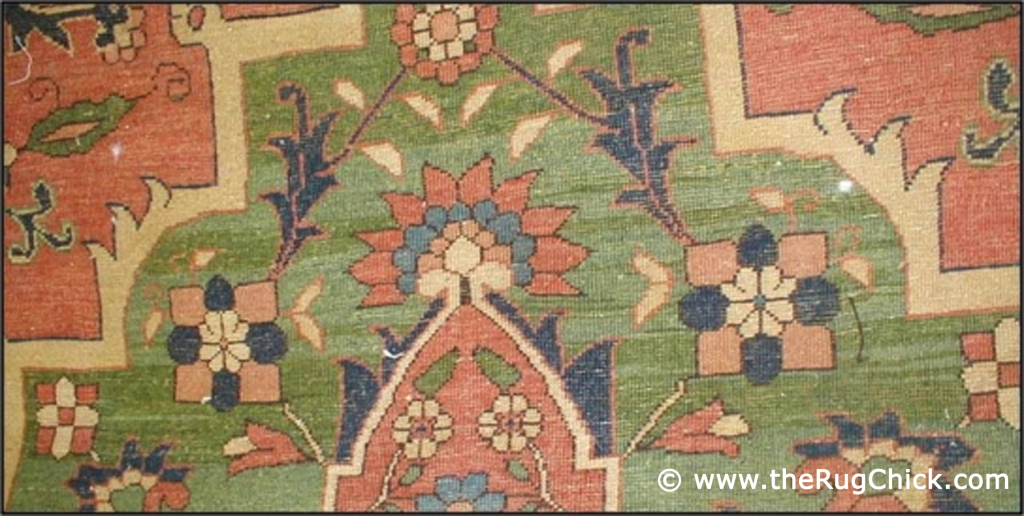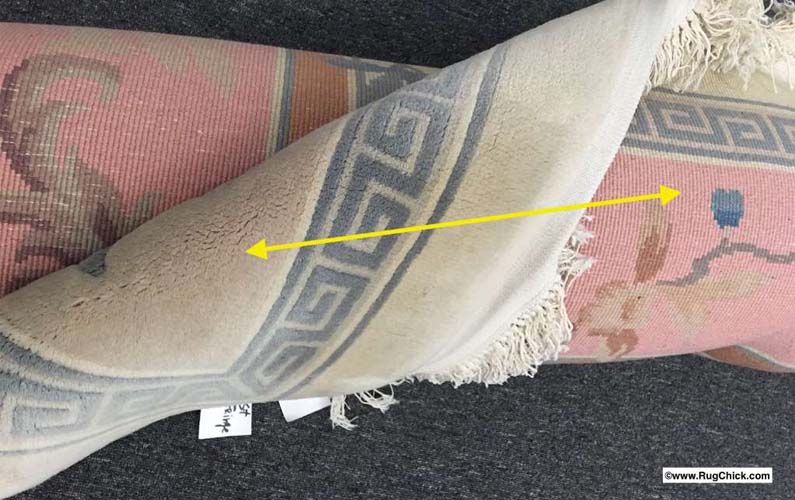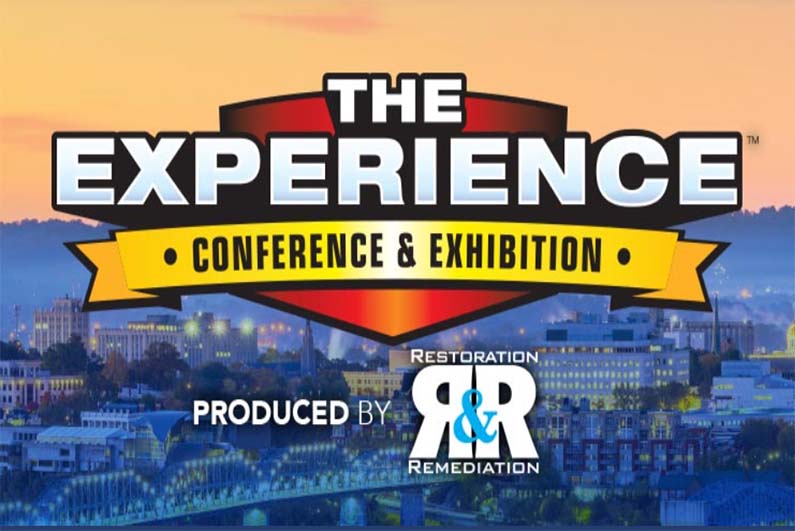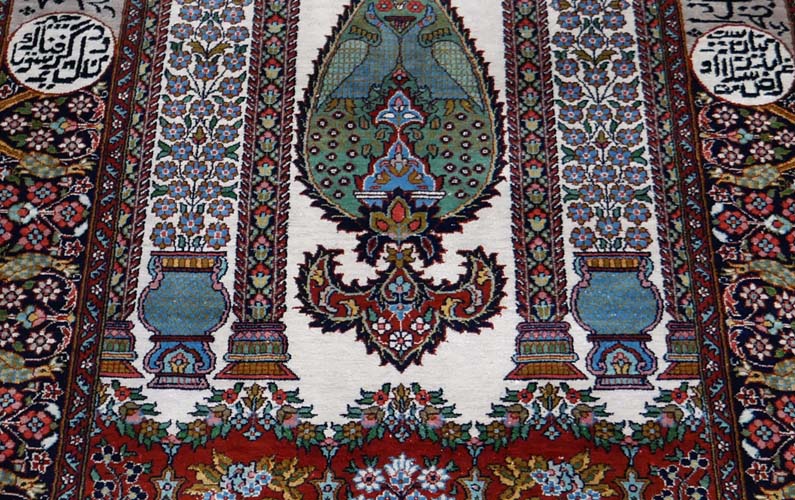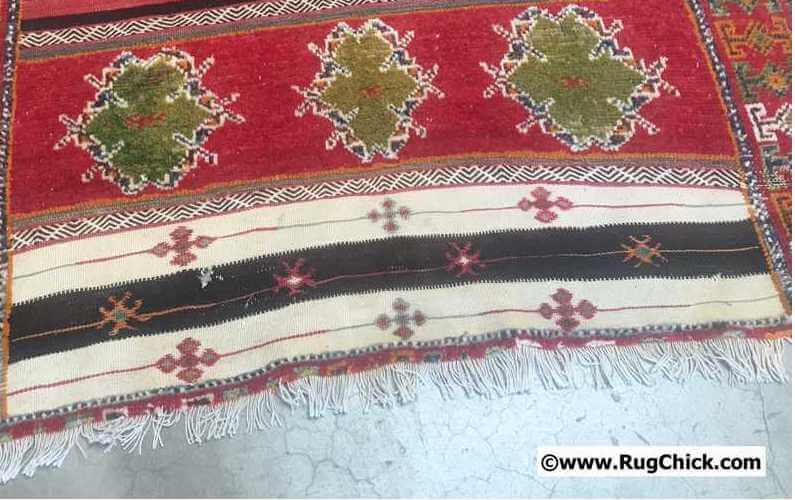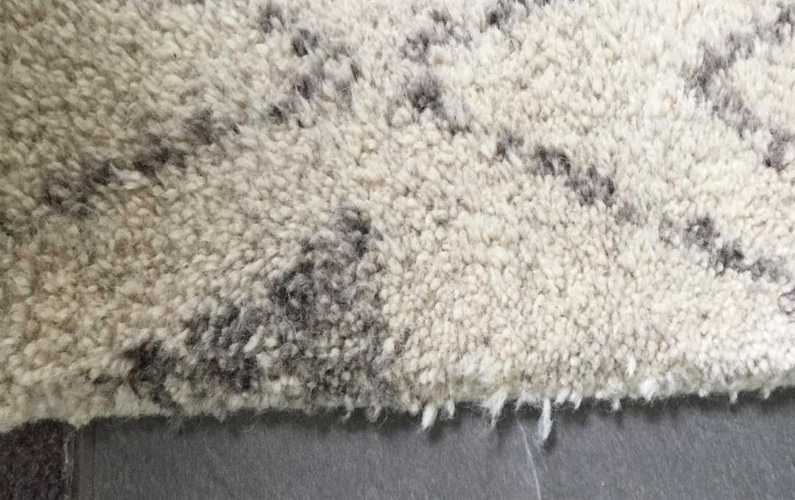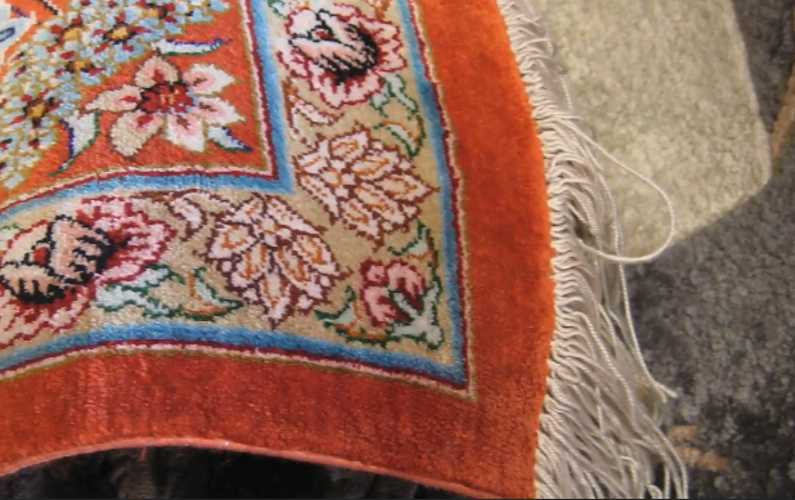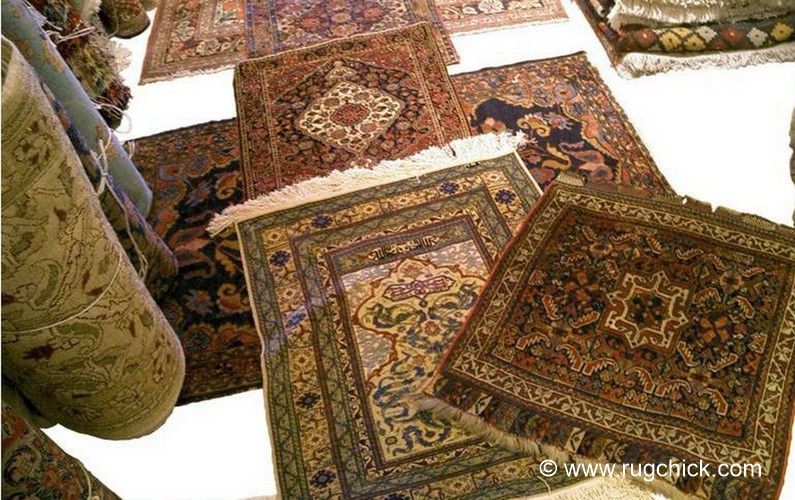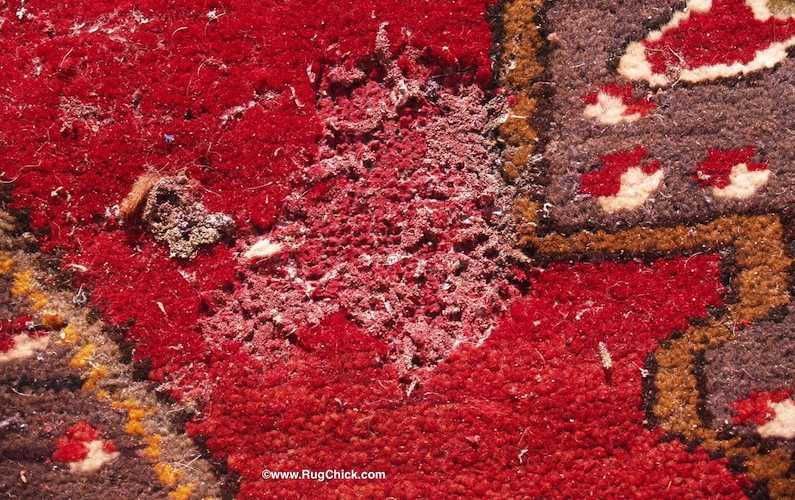Why Rugs Have Stripes.
With hand woven rugs, the knots are tied (actually they are wrapped) around the foundation threads from side to side.
Search google images for RUG LOOM – and you will find photos of looms – like this one of a Tibetan rug.
The face fibers (in this case wool) are wrapped around the warp threads to create the “fuzzy” side of the rug. And here’s where the “stripes” come from. The color of the wool has natural variations in its original condition. Take a good look at the next herd of sheep you see, and you will see that though they all look the same, actually they vary from one another a bit. Some a little more gray, or yellow, or ivory.
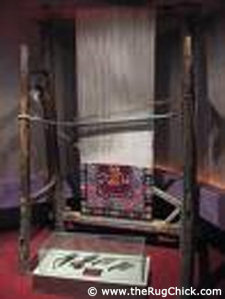
The wool is affected by genetics, by diet, by environment, by age. And when it is dyed a particular color, it carries with it those same variations into the end product. As one batch of wool is used, then runs out, and another is grabbed, these variations create a side to side striping in the rug that is referred to as “abrash.”
Abrash is a natural dye variation in a hand woven rug. It is not viewed as a flaw, but rather as a characteristic of a hand woven rug. Every rug has this, though some to a greater degree than others.
Here’s the danger with abrash. If you do not point it out BEFORE the cleaning, a client may believe that you have caused damage to the rug. When it was covered up in soil they just knew the rug to be red. But when clean, they may see the striping in the field – that they don’t remember – and mistakenly think that you have damaged their rug.
How to counteract this? Take a look at the BACK of the rug. If the discoloration can be seen on the back side – the side that has not been exposed to light, foot traffic, or the cleaning solutions – then you know you are dealing with changes in the wool itself – dye lot changes – and not anything related to your cleaning process.
Here is a great comparison of the front and back of an old Feraghan Sarouk rug to show you a fabulous example of abrash in action:
Always include a mention of abrash in EVERY pre-inspection process you have with clients, so there are no surprises. Just like people have different variations in how they look, so do rugs. It’s part of their unique rug “personality.”

